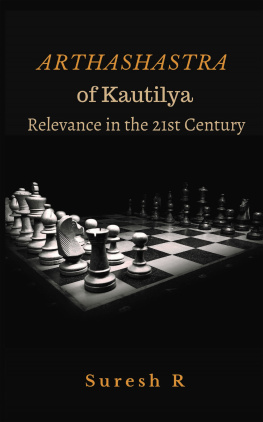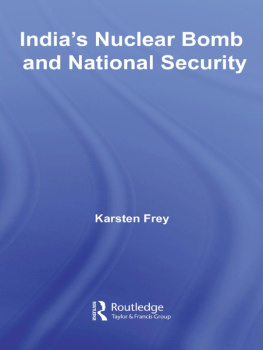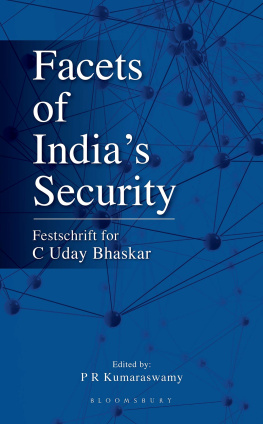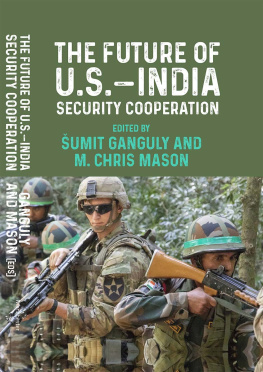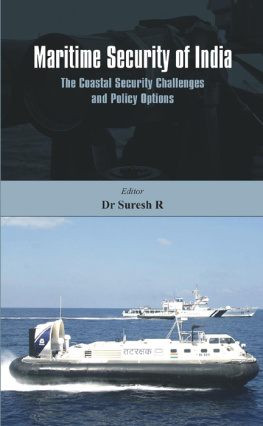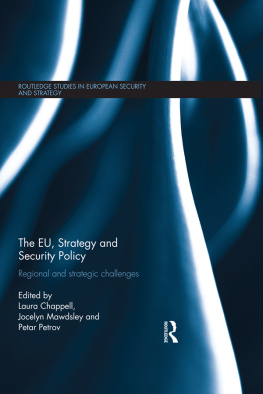USI Strategic Year Book
2021
United Service Institution of India
Strategic Year Book
2021
Concept and Structure by
Major General BK Sharma, AVSM, SM & Bar (Retd) Director USI
Editors
Lieutenant General GS Katoch, PVSM, AVSM, VSM (Retd)
Group Captain Sharad Tewari, VM (Retd)
Dr. (Mrs) Roshan Khanijo
United Service Institution of India
New Delhi
United Service Institution of India
Strategic Year Book 2021
Published in 2021
Copyright United Service Institution of India
The United Service Institution of India
Rao Tularam Marg,
Post Bag No. 8
Vasant Vihar P.O.,
New Delhi 110 057
Phone (O) 91-11-2086 2316, 2086 2324
Website:www.usiofindia.org
ISBN : 978-93-90917-48-8 (Hardback)
ISBN : 978-93-90917-49-5 (ebook)
Published by
Vij Books India Pvt Ltd
(Publishers, Distributors & Importers)
2/19, Ansari Road
Delhi 110 002
Phones: 91-11-43596460, 91-11-47340674
Mob: 98110 94883
e-mail:
web : www.vijbooks.in
All rights reserved. No part of this publication may be reproduced, stored in a retrieval system or transmitted in any form or by any means, electronic mechanical, photocopying, recording or otherwise without the written permission of the Copyright owner.
Disclaimer: The views expressed are those of the authors and do not necessarily represent the views of the organisation that he belongs to or of the USI.
Design and layout by
Team Vij Books
T he United Service Institution (USI) of India published its first Strategic Year Book in 2016, based on the overarching theme of comprehensive national security, with contributions from noted strategic experts. Continuing the tradition of insightful analyses, the USI Yearbook 2021 will provide readers a balanced and researched view of global strategic issues, Indias evolving strategic interests, geopolitical developments in the strategic neighbourhood, measures for developing comprehensive national power and defence capability development.
The year 2020 has been an exceptional one on account of the Covid-19 pandemic. India, like the rest of the world, was deeply affected by its impact not only on the lives and wellbeing of its people, but much more on account of the negative impact on its economy. The lockdown from 24 March 2020 ostensibly kept the fatalities down in India in comparison to many other countries and was a cause of cheer, but by June 2020 a new situation arose concurrent to the easing of the lockdown restrictions. The clash with the Chinese at Galwan on the Line of Actual Control (LAC), in Ladakh, resulted in maximum casualties since 1967. It also vitiated India-China relations and brought India and China perilously close to war. The mobilisation of forces to Ladakh was no less than that for the Kargil war, rather it was more, and brought about a significant reorganisation, especially in the army. It also accelerated the deployment of the newly contracted Rafale jets as both countries postured for war and then were engaged in interminable talks at the military level to disengage. These still remain on, with a number of issues yet to be resolved.
The past year has also been a defining one for strategic affairs in the world. The US-Taliban peace deal and Brexit were divisive in many respects. On the other hand, the growing coalescing of the QUAD was obviously affected by the Ladakh tension and Chinas continuing belligerence in the South China Sea; one could say that it was affected positively. The US elections in November brought an end to uncertainty of the Trump Presidency and the shift towards America First which had drawn the U.S. away from multilateralism. The Biden Presidency may change that though this is unlikely to happen in the immediate future. That uncertainty led to growing strategic footprints of Russia and even a middle power such as Turkey. In J&K, the revocation of Article 370 and reorganisation of J&K in 2019 continue to remain active issues. Slowly the uproar in Pakistan appears to be turning to a grudging acceptance of ground realities. The Kashmir insurgency continues to simmer but the boil is receding. Restoration of 4G broadband services is a pointed indicator of that. The ambush in the Bijapur district of Chattisgarh after a hiatus has again focused attention on Left Wing Extremism. It highlights that India still faces a multitude of vexed internal security challenges. Keeping this environment in mind, India should be prepared for contingencies both, within and outside the country. The consolidation and maturing of the institution of the Chief of Defence Staff (CDS) has led to the impending establishment of joint commands, with the Air Defence Command likely to be the first off, the block.
As in every year, the distinguished and learned writers of the articles in this issue of the USI Year Book will be read widely and generate informed debates leading to cross-fertilisation of varied perspectives. This recording of strategic events over the past year, regionally and globally, will continue to serve as a useful reference work for practitioners and students of international relations and strategic affairs.
Jai Hind.
|
New Delhi | Maj Gen BK Sharma, AVSM, SM** (Retd) |
25 April 2021 | Director, USI |
T homas L. Friedman in his classic analyses of globalisation had stated that the world is flat. This was in the context of commercial interaction between States. To this one can add that the world is also much more dynamic than before: especially in the context of strategic interaction between States. Strategic affairs in the world have always changed through time. From hunter-gatherers fighting for their space to the clash of civilisations. What has changed profoundly is only the pace of change. Means of communication and transport, accelerated by technology, has meant that strategic affairs move and change fast, making it a VUCA world. In line with this, all those concerned with strategic affairs also must think and move fast to remain ahead of the opponents strategic moves or OODA loop. Being aware of strategic issues hence remains all important.
Keeping this aim in mind, this issue of the USI Strategic Year Book 2021 follows its format of placing contemporary strategic issues under sections. This year there are six sections.
The first section is Indias National Security Overview. Under this the lead article is in line with the dominant global threat of the year; the Covid-19 pandemic. This article on Indias Strategic Security Scan in a Covid Impacted 2021, by the Director USI Maj Gen BK Sharma, AVSM, SM & Bar (Retd) provides a basis for the reader to join the dots between the other articles and sections that follow. Another article in the first section, which provides a different perspective is, Emerging Paradigms of National Security: Threats & Responses by Lt Gen (Dr) Prakash Menon, PVSM, AVSM, VSM (Retd). The last article on Governance Responsibility of the Polity and the Public Services

